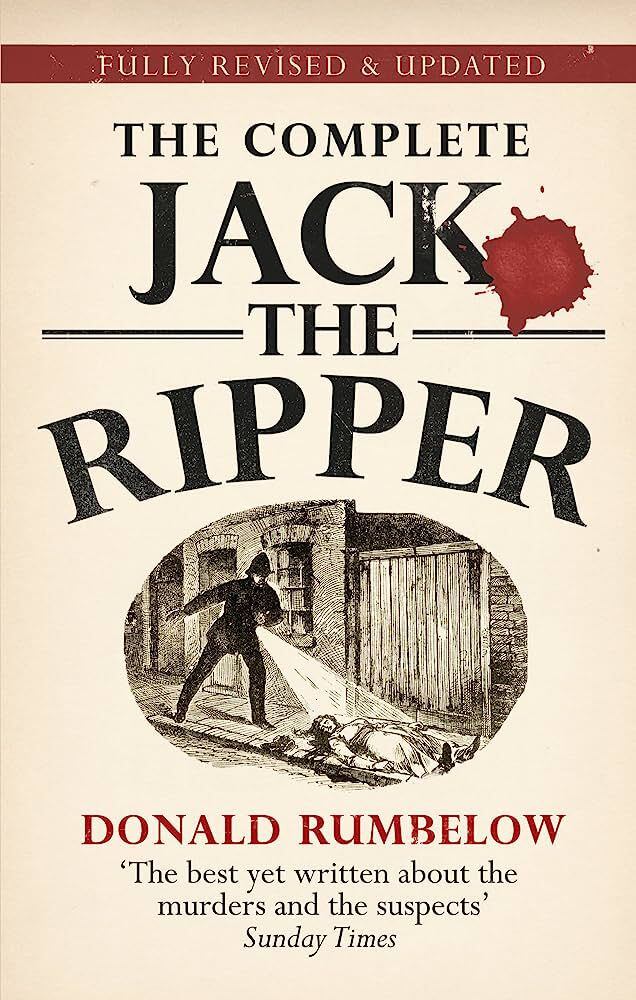“I have laughed to see the police think they are so clever and talk about being on the right track”, wrote one of the most famous serial killers in history. In the infamous letter from him “Dear Boss” sent to the Central News Agency (CNA) in London on September 25, 1888, he would introduce himself as Jack the Ripper.
LOOK: US chemical weapons: how was the immense and dangerous arsenal that that country has just completely destroyed
A nickname known throughout the world, but not necessarily because of what happened in the English capital at the end of the 19th century, but because of the immense film and publishing industry that was generated around the story.
An aura full of mystery and questions that was to be expected due to the series of gaps left by the investigation around this enigmatic character whose identity, more than 150 years later, is still unknown.
Proof of interest in Jack the Ripper is that the writer Sarah Bax Horton, great-great-granddaughter of one of the policemen who investigated the Ripper’s crimes, will present a book next month in which she claims to reveal the true identity of the murderer.
THE ORIGIN OF THE LEGEND
When the letter of Jack the Ripper He arrived at the CNA offices, two murders had already been reported in the dangerous neighborhood of Whitechapel, east London.
The first victim was identified as Mary Ann Nichols, whose body was found in the street on August 31, 1888. The woman’s throat had been slit and the body showed signs of brutality, such as cuts on the sides and punctures in different parts of the body.
Eight days later, Annie Chapman’s body was found under similar circumstances. Cut throat, with the abdomen uncovered, the intestines exposed and part of the uterus removed.
Both victims were local prostitutes. The brutality of the murders and other unsolved crimes in the area led police to determine that he was behind a serial killer.
Despite the fact that since then the authorities began an extensive investigation that included interviewing more than 2,000 residents of the area, investigating 300 of them and arresting at least 80 suspects, they never produced convincing results.
The macabre attacks of Jack the Ripper, on the other hand, never ceased. Chapman’s murder was followed by those of Elizabeth Stride and Catherine Eddowes, both on September 30; and that of Mary Jane Kelly, on November 9.
In addition, the press coverage of the case led to many impersonators posing as the killer and began sending letters to authorities claiming to be Jack the Ripper, giving false leads about him, or simply volunteering to catch him. .
The immense volume of information received by the police and the press, added to the scarce technological resources of the time, meant that the case surpassed all the authorities. To date, experts on the subject debate about which tests are really true and which are not.
For example, a fragile consensus has been reached on the number of victims that Jack would have murdered: they would be the five mentioned in this article, who are called canonical victims; but there are suspicions that he was behind a hundred homicides in the years before the Whitechapel massacre.
Another consensus was reached on the letters. It is estimated that Jack the Ripper sent three missives, the first of which was “Dear Boss”, followed by “cheeky jacky”, a postcard with a drawing of a knife and the phrase “you will hear from me again”, which was sent on September 27 to the CNA.
Finally there is “From hell”, a letter sent to George Lusk, the head of the Whitechapel Vigilance Committee, on October 1, 1888. It is by far the most terrifying of the murderer’s letters, for it came accompanied by a piece of kidney that Jack would have removed from one of his victims.
A medical analysis of the time would confirm that it was a human organ but it could not be determined who it belonged to.
FACELESS MURDERER
After the murder of Mary Jane Kelly, the crimes of Jack the Ripper they stopped suddenly. Authorities were never able to profile the killer or find enough evidence to charge any of the nearly 100 suspects they handled during those months.
All these ingredients combined to make the case one of the greatest police mysteries of all time. Something that was quickly taken advantage of by the entertainment industry.
There are endless movies, series and books that mention or even are based entirely on the murders of Jack the Ripper. Within the texts, however, there is a rather special subgenre, that of those who decided to continue investigating the murderer.
In that sense, one of the best rated texts in recent years is “The Complete Jack The Ripper” (Jack the Ripper completely, in unofficial translation), by former London Metropolitan Police agent Donald Rumbelow.
In his work, Rumbelow reviews the crimes, the investigations and the legends woven around the figure of Jack the Ripper. As part of his most striking conclusions is the fact of considering one more death as canonical, that of Martha Tabram, which occurred on August 31, 1888; In addition, he clarifies that her last victim, Mary Jane Kelly, was not a prostitute, so she would break one of the main patterns attributed to the Ripper.

Rumbelow also believes that the killer was a person with connections in the police force, which allowed him to be constantly ahead of the authorities. Furthermore, he suggests that he would have had medical knowledge from the cuts and extractions he performed on his victims.
Despite his conclusions, Rumbelow does not venture to point out the possible man behind the legend, although he considers Aaron Kosminski as the most likely on the list of suspects.
Kosminski, a 23-year-old Polish barber at the time of the crimes, was included on the suspect list because he suffered from mental disorders and had a history of assaulting women. However, the authorities never found evidence against him and, over time, many experts claimed that incriminating him could respond to the growing anti-Semitism of the time.
Other names that have been used throughout history are those of Dr. Montague John Druitt, who also suffered from mental disorders and committed suicide shortly after the last murder; the Polish barber George Chapman, imprisoned for murdering three women in 1891; Scottish doctor Thomas Neill Cream, imprisoned for murdering four women in 1892; or the painter Walter Sickert, known for being an extremely violent person who lived in the Whitechapel neighborhood at the time of the murders.
To this list we must now add the name of Hyam Hyams, a local cigar maker who was 35 years old on the date of the crimes and who is pointed out by Bax Horton as the real one. Jack the Ripper.
The author claims to have based her investigation on medical records from the time, which described the killer as a man in his thirties with a stiff arm and knee problems. Hyams suffered an injury that prevented him from “bending or straightening” his left arm; In addition, documents from hospitals and psychiatric hospitals in the city show that he had a knee problem and that he suffered from epilepsy.

The author also found similarities between her height and complexion and the descriptions of the witnesses.
Hyams was on the police suspect list in the 19th century, but according to Bax Horton “never been thoroughly studied before” your profile. According to his research, the man was admitted to a mental hospital in 1889 and died in 1913.
Source: Elcomercio
I am Jack Morton and I work in 24 News Recorder. I mostly cover world news and I have also authored 24 news recorder. I find this work highly interesting and it allows me to keep up with current events happening around the world.

:quality(75)/cloudfront-us-east-1.images.arcpublishing.com/elcomercio/WK6QUUZKVFFS7A5I3MV5XK6OQI.jpg)



:quality(75)/cloudfront-us-east-1.images.arcpublishing.com/elcomercio/I4FW5POUWVF55CHSHXSTUCL2M4.jpg)

